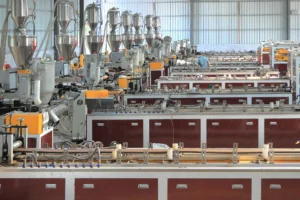Expanding Applications of Microcellular Foamed WPC in Modern Industries
Microcellular foamed wood-plastic composites (WPC) represent a significant innovation in sustainable materials, offering enhanced performance and expanding application possibilities. Compared to traditional WPC, these materials are lightweight yet provide superior impact resistance, flexibility, thermal stability, and durability. With advancements in technology and growing market demand, the future of foamed WPC is exceptionally promising.
Key Features of Microcellular Foamed WPC
Microcellular foamed WPC combines thermoplastic polymers with wood fibers or plant-based fillers, creating a low-density material through a specialized foaming process. These composites overcome the limitations of traditional WPC, such as high density and limited dimensional adaptability. Benefits include:
- Lightweight Structure: Ideal for applications where weight reduction is critical.
- Enhanced Strength: Increased impact resistance and fatigue life.
- Thermal Stability: Effective in insulation and temperature regulation.
Expanding Applications Across Industries
Foamed WPC materials are making a significant impact in various fields:
- Automotive Industry: Lightweight yet durable components, reducing vehicle weight and improving fuel efficiency.
- Construction: Insulation and thermal regulation materials for energy-efficient buildings.
- Packaging: Strong yet lightweight solutions for transport and storage.
- Sports Equipment: Improved resilience and reduced weight for enhanced performance.
These materials cater to sustainability goals while meeting performance standards, making them a preferred choice in green industries.
Future Research and Development Directions
To meet the growing demand and refine the properties of foamed WPC, researchers are focusing on:
- Advanced Foaming Techniques: Developing methods like supercritical fluid injection molding to achieve better pore structures.
- Interface Compatibility: Enhancing the bond between plastic and fiber to improve performance.
- Functional Materials: Creating composites with properties such as fire resistance, anti-aging, and sound insulation.
- Higher Fiber Content: Increasing biomass content to lower costs and improve biodegradability while overcoming foaming challenges.
These advancements will ensure that microcellular foamed WPC continues to evolve, addressing industry-specific needs with innovative solutions.
Microcellular foamed WPC is revolutionizing the wood-plastic composites industry with its lightweight design, superior performance, and sustainability. As research and technology progress, the applications for these materials will continue to expand into diverse industries, fulfilling the demand for eco-friendly and high-performance solutions. Explore Oakio’s innovative range of WPC materials to discover how these advanced composites can meet your needs!
Trending Reading
What Are the Differences Between the WPC Board and PVC Board?
[2024 Update] How Long Does WPC Decking Last?













